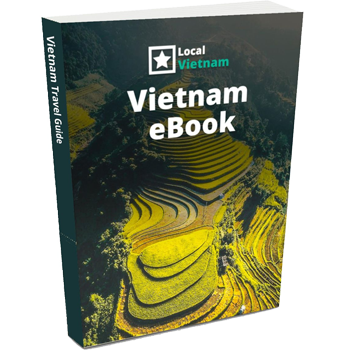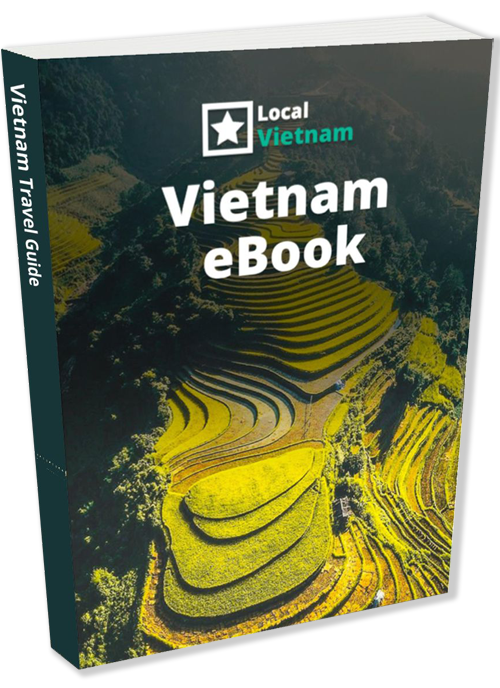About Thai Binh
Located in northern Vietnam, Thai Binh lies at the heart of the Red River Delta and is known for its rich history and cultural traditions. Historically, the province was once an island surrounded by three major rivers, giving its people a unique cultural identity. Thai Binh is celebrated as the homeland of hát chèo, a traditional form of Vietnamese opera that remains a significant part of the province’s cultural heritage. It’s also the birthplace of notable historical figures like Trần Thủ Độ, the founder of the Trần Dynasty, which ruled Vietnam in the 13th century.
Today, Thai Binh retains its charm with vast rice fields, peaceful villages, and local crafts. While less visited than other provinces, it offers an authentic rural experience. In this guide, you’ll find the best things to do in Thai Binh, from exploring cultural landmarks like Keo Pagoda to immersing yourself in the traditional arts and scenic countryside.
Is Thai Binh worth to visit?
Thai Binh is not a must-visit destination for most travelers to Vietnam, especially when compared to nearby provinces like Hanoi, Ninh Binh, or Halong Bay, which offer more striking landscapes and iconic sights. The province is best suited for those with extra time who enjoy off-the-beaten-path destinations or have a specific interest in history and traditional Vietnamese culture. While there are things to do in Thai Binh, such as visiting Keo Pagoda or exploring rural villages, the sights here may not be compelling enough for travelers with limited time.
Best time to visit Thai Binh
Thai Binh is located in northern Vietnam, sharing a similar climate with Hanoi, Ninh Binh and other Red River Delta provinces. The dry season, from October to April, is the best time to visit Thai Binh, with the most pleasant weather occurring in October and November when temperatures are cooler, and the rice fields are golden after the harvest.
During the rainy season (May to September), heavy rains are common, especially in July and August, which can make exploring less enjoyable. Winters (December to February) can get quite cold, with temperatures dropping to around 10°C, so pack accordingly if visiting during this time.
How to travel to Thai Binh
Thai Binh City is the main urban center in Thai Binh Province, but it remains off the radar for most travelers. Due to its smaller size and limited tourism infrastructure, the easiest way to get there is by first traveling to Hanoi, which is about 2.5 hours away by road. Alternatively, you can travel via Nam Dinh, a larger nearby city just 30 minutes away, offering better transport options.
Flights to Thai Binh
Thai Binh does not have its own airport. The nearest airport is Kien An Airport in Hai Phong, which is approximately 1.5 hours from Thai Binh City by car. Hai Phong is connected to major Vietnamese cities like Ho Chi Minh City, Da Nang, Nha Trang, and Phu Quoc.
For better flight options, Noi Bai International Airport in Hanoi, located 2.5 hours away, is the best choice. This airport has extensive domestic and international connections, making it the most convenient gateway for reaching Thai Binh.
Bus options
The easiest way to reach Thai Binh is by bus from Hanoi, with multiple daily departures taking about 2.5 hours and costing as little as $5 USD. There are also limited bus routes connecting Thai Binh to other nearby destinations, such as:
- Ninh Binh: 1.5 hours
- Hai Phong: 2 hours
For destinations beyond these, you might need to check if there are buses to Nam Dinh, which has more frequent transport connections, including a train station. From Nam Dinh, you can easily take a taxi to Thai Binh.
Private car with driver
Hiring a private car with a driver is the most flexible option, allowing you to travel at your preferred time and from any location. It’s particularly convenient if you’re traveling from Hanoi, Ninh Binh, or Hai Phong and want to make sightseeing stops along the way.
If you don’t plan to stay overnight, Thai Binh can even be explored as a day trip from Hanoi or Ninh Binh, focusing on its key sights before returning to your base.
Things to do in Thai Binh
While Thai Binh may not be a major tourist destination in Vietnam, it has a few unique attractions and cultural experiences for those looking to explore an off-the-beaten-path location. From ancient temples to traditional craft villages, there are interesting things to do in Thai Binh that provide a glimpse into its rich history and local life. Below are the highlights.
1. Keo Pagoda
The Keo Pagoda, built in 1061, is one of the oldest and most well-preserved pagodas in Vietnam. This stunning wooden structure is an excellent example of traditional Vietnamese architecture, with intricately carved wooden doors and a serene atmosphere. isitors can explore its serene grounds and admire the well-preserved features, such as the wooden doors and ornamental details.
Keo Pagoda is best visited during its annual festival held in the 9th lunar month, where traditional rituals and cultural performances take place.
Travel Tip: While Keo Pagoda is worth visiting for its historical and architectural significance, it’s best paired with other nearby activities, as it won’t take more than an hour to explore.
2. Dong Xam Silver Village
Dong Xam Village in Kien Xuong District has been famous for its silver carving craft since the 17th century. The artisans here are renowned for their skill in creating intricate silver products, which are exported to countries like Japan, South Korea, and Spain. Visitors can see the artisans at work, learn about the craft’s history, and purchase unique silver items as souvenirs.
Dong Xam Temple
Located within the village, the Dong Xam Temple honors Nguyen Kim Lau, the founder of the silver carving craft. The temple itself is a magnificent example of Vietnamese architecture, featuring beautifully carved wooden details and a peaceful courtyard. Every year, a festival is held here to celebrate the craft’s heritage, making it an ideal time to visit.
3. Thai Binh City
Thai Binh City is the provincial capital and primarily a transit point rather than a tourist destination. However, if you find yourself here, there are a few spots to explore:
Places to visit in Thai Binh City:
- Thai Binh Cathedral Parish: A modern church with a unique design. While impressive from the outside, access to the interior may be limited.
- Thai Binh Square: A spacious public area featuring a statue of Ho Chi Minh and local farmers, surrounded by trees and grassy fields. It’s a popular spot for locals to relax, fly kites, or enjoy casual outdoor activities.
- Thai Binh Museum: A small museum showcasing artifacts related to Vietnamese culture and the history of the area. Note that the exhibits are mostly in Vietnamese.
- Bo Market: A bustling local market selling a mix of household items, clothing, and garden tools. It’s a good place to experience local life.
4. Dong Chau Beach
Located about 30km from Thai Binh City, Dong Chau Beach offers a peaceful atmosphere with seafood restaurants and scenic coastal views. While the beach itself is not particularly clean or ideal for swimming, it’s a good spot to enjoy fresh seafood and walk along the scenic paths.
Travel tip: Skip the long walk across the bridge to the other end of the beach—it’s not well-maintained and doesn’t offer much to see.
5. Con Vanh Beach
Con Vanh Beach is a more remote coastal destination in Thai Binh. While the beach can offer a unique local experience, it’s not the cleanest due to its proximity to a major river. At low tide, the sandy areas are more accessible, but high tide brings debris and can limit swimming.
6. Dong Bang Temple
Dong Bang Temple, located in An Le Commune, Quynh Phu District, is a national historical relic with great spiritual significance. Built during the reign of the 18th Hung King, the temple is dedicated to King Father Bat Hai Dong Dinh, a legendary figure in Vietnamese history. The temple features grand traditional architecture with intricate carvings, copper statues, and large courtyards.
The Dong Bang Temple Festival, held annually in the eighth lunar month, is a highlight, attracting thousands of visitors to honor Vietnam’s historical heroes.


